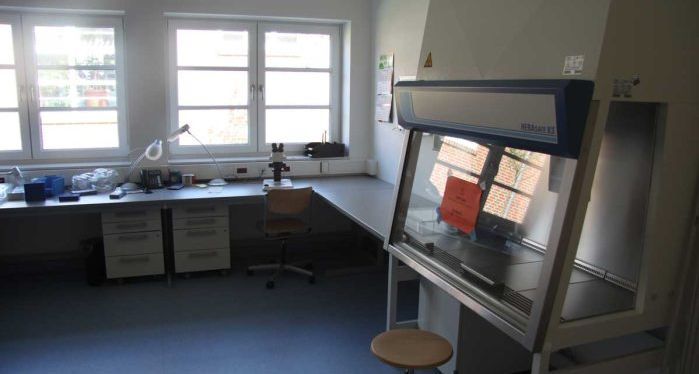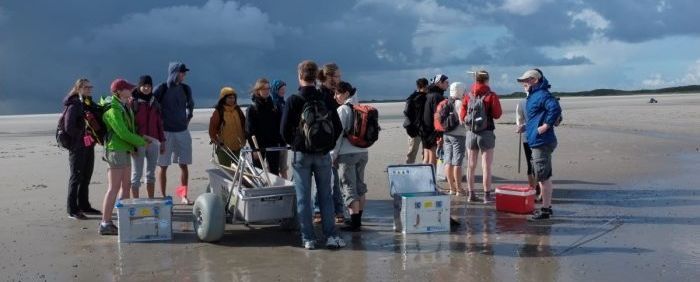DynaDeep
Project location Spiekeroog
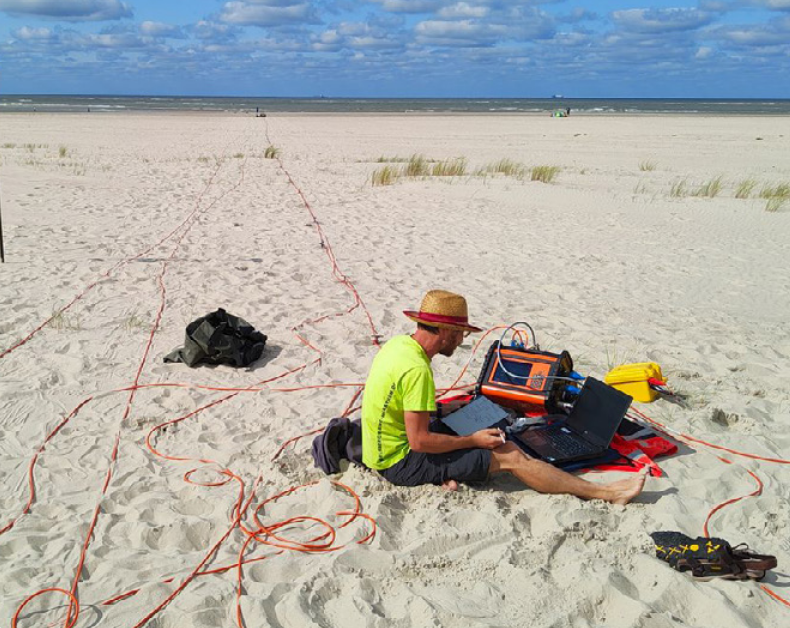
The subsurface of beaches is home to a wide variety of little-researched chemical, geological, and microbiological processes. This dynamic underworld, also known as the “subterranean estuary,” is the research area of the DynaDeep group.
Accommodations and laboratories at the Wittbülten Research Center are regularly used as a base for conducting field studies and water sampling at a partially underground measuring field on the north beach.
Biogeochemistry course for students
Master's in Marine Environmental Sciences
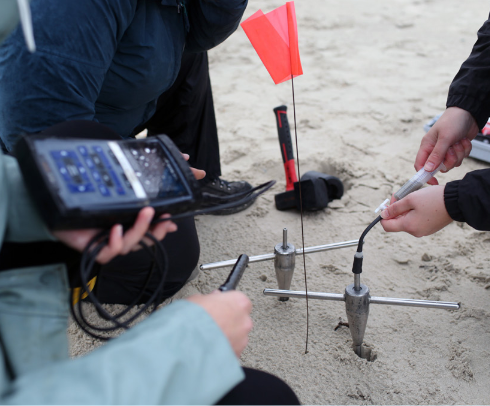
Since 2014, a block course has been held every summer in Wittbülten on Spiekeroog. With a group of 8 to 10 students, a research project on biogeochemistry is carried out on the north beach of Spiekeroog.
The Master's program in Marine Environmental Sciences is a research-oriented program, and the research center offers ideal conditions for teaching field research on site.
Head: Dr. Jutta Niggemann
Research center in the Wittbülten National Park House
Research and living in the heart of the Wadden Sea World Heritage Site – for all academic and scientific institutions, working groups, researchers, students, and projects.
Researchers working at Wittbülten have the opportunity to stay in affordable apartments, conduct research, process samples professionally in the laboratory, and evaluate data.
The diverse fields of research on site include the island's habitats, which are within easy walking distance of the research center. These are the extensive beach areas, foredunes with beach grass, white dunes with beach grass and beach thistle, extensive gray and brown dunes, and salt marshes with adjacent mudflats.
The Ostplate, a very young and dynamic habitat, borders the east of the research center. It is particularly interesting because the sandy area, which was still bare in 1950, is in the process of becoming an island and makes up more than half of the island's body. Its zoning and habitats still show their originality and are now located in the quiet zone of the national park.
Other possible subjects of study include freshwater lenses, species diversity of flora and fauna, marine macrozoobenthos, climate adaptation strategies, and Spiekeroog as an example of sustainable tourism/sustainability development.
Work in the national park must be approved by the Lower Saxony Wadden Sea National Park Administration.
In addition to workspaces in the laboratories and course rooms, there are three apartments with shared kitchens for 12 to 14 people.
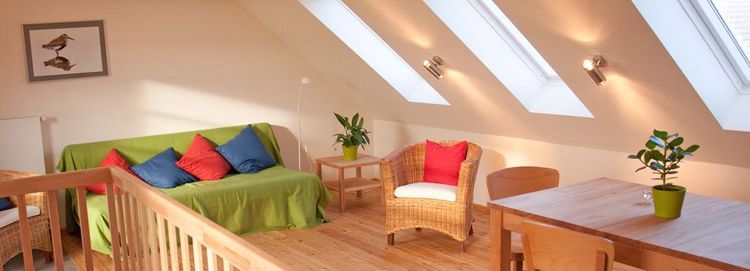
The apartments and laboratories of the Wittbülten Research Center were built at the Hermann Lietz School. This enables university environmental research and subject-specific didactic research to be carried out in cooperation with the Hermann Lietz School in Spiekeroog and Wittbülten.
Please send your request to [email protected], stating:
- desired length of stay (or possible periods)
- the estimated number of people or the number of apartments required
- the workspaces required (if desired)
Course room
for seminars or presentations
- 30 workstations
- interactive whiteboard (front)
- customizable table arrangement, individual and group work possible
- outlet for continuous supply of demineralized water
- extensive range of experiment kits, demonstration equipment, and glassware of all kinds
- suitable for seminars and presentations, or as workstations for larger research projects, including for processing and analyzing samples taken by students themselves
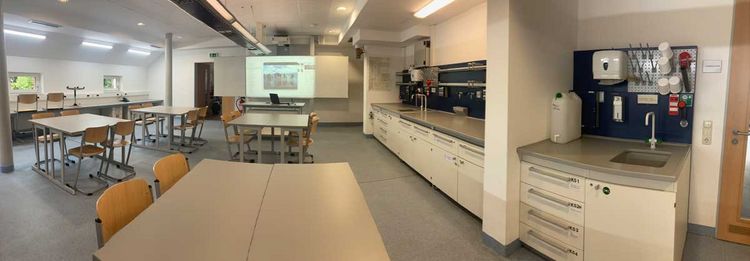
Preparation room
for wet chemical analyses, digestion processes, and stationary long-term tests
- central gas cylinder cabinet
- safety cabinets for storing chemicals and solvents
- explosion-proof refrigerator for storing temperature-sensitive substances and samples
- separate fume hood for decanting solvents
rotary evaporator for concentrating solvent residues
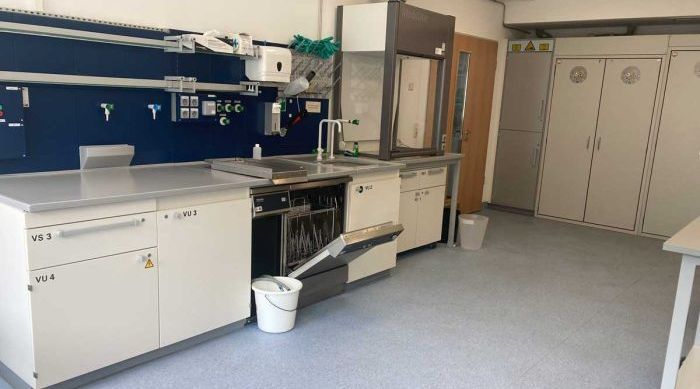
Chemistry laboratory
for chemical, biochemical, and physical testing
- programmable drying cabinet for sample drying
- spacious fume hood for performing chemical digestion procedures
- UV/VIS spectrophotometer for initial spectroscopic analyses
- ultrasonic bath for cleaning rock samples, for example
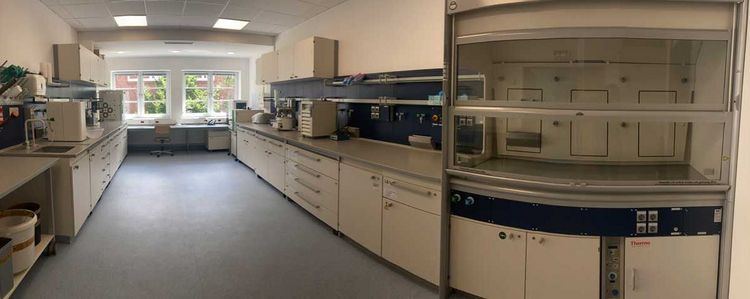

![[Translate to English:]](/f/5/_processed_/3/2/csm_ICBM-Logo-transparent-_91fe1c6774.png)
